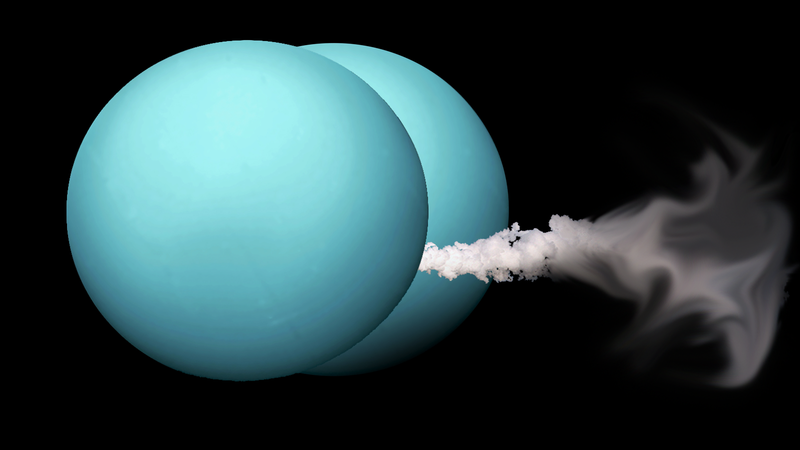Uranus is all over the place. It spins weirdly, its magnetic field is off-center, and now we’ve just found out it may open and shut its magnetosphere every day, too. The research by Xin Cao and Carol Paty from the Georgia Institute of Technology was published in the Journal of Geophysical Research: Space Physics.
Modeling the system around Uranus, they found that its magnetosphere occasionally opens up to allow solar wind through. This seemed to happen almost every day, about every 17 Earth hours.
This opening and closing happens around Earth, and it’s called magnetic reconnection – where the magnetic field lines of our magnetosphere and the solar wind align. This produces aurorae at its poles, and it’s likely doing the same at Uranus. But at Earth, this process is fairly irregular. At Uranus, it seems to be much more frequent.
“As it is tumbling around, the magnetosphere’s orientation is changing in all sorts of directions,” Paty told New Scientist. The planet is really weird already. It rotates at almost a right-angle to the planet of its orbit around the Sun, something no other planet does.
This may have been caused by a collision with an Earth-sized object long ago.
Its magnetic field is equally weird. It’s tipped by about 60 degrees to the planet’s rotation, and is also offset from the center by about one-third of the planet’s 25,360-kilometer (15,760 miles) radius. On Earth, and indeed other planets, our magnetic field lines come from pretty near our geographic poles – although magnetic north and south changes a bit. Not so on Uranus.
Unfortunately, though, we’ve got a very little information about Uranus. Most of our data comes from the flyby of Voyager 2 in 1986, our only spacecraft to ever visit this planet. NASA is currently considering proposals to send an orbiter to Uranus in the next decade or two, which would greatly increase our understanding.
But for now, we’ve got to rely on models like this latest study. This basically modeled Uranus and its magnetosphere as a whole, and it closely matched the data gathered by Voyager 2. It seems that the rotation of the planet might be driving its changing magnetic field. “That’s completely different from the Earth or any of the other planets,” Paty told Gizmodo.
Finding out more about Uranus is important, because quite a few exoplanets seem to be somewhat similar, or at least like Neptune. Ice giants like this seem to be fairly common, so if we can get to the bottom of how the ones in our own Solar System work, we might learn a bit more about planets elsewhere. That is one of the biggest goal in modern astronomy.






No comments:
Post a Comment